
Buildings
Scope & Guideline
Connecting Disciplines for a Sustainable Built Environment
Introduction
Aims and Scopes
- Sustainable Building Practices:
Research related to green building technologies, energy-efficient designs, and low-carbon construction methods, emphasizing the integration of sustainable materials and practices in the building lifecycle. - Structural Engineering and Materials:
Innovations in structural design and materials, including the performance of new composite materials, strength analysis, and the application of advanced materials like FRP and geopolymer in construction. - Building Performance Assessment:
Studies assessing the thermal, acoustic, and environmental performance of buildings, including the evaluation of indoor air quality and occupant comfort in various building designs. - Digital Technologies in Construction:
Exploration of digital tools such as Building Information Modeling (BIM), digital twins, and machine learning applications in construction management and design optimization. - Disaster Resilience and Safety:
Research on the resilience of buildings against natural disasters, including seismic performance, emergency evacuation strategies, and risk assessment methods for construction safety. - Cultural and Historical Preservation:
Studies focusing on the preservation and rehabilitation of historical buildings, examining the intersection of heritage conservation and modern building practices.
Trending and Emerging
- Smart Building Technologies:
A rapid increase in research related to smart buildings, including automation, IoT integration, and energy management systems, showcasing the industry's shift towards intelligent infrastructure. - Resilience and Adaptation to Climate Change:
Growing emphasis on research addressing climate resilience, sustainable adaptation strategies for buildings, and the integration of green infrastructure to mitigate climate impacts. - Digital Twin Applications:
An emerging focus on the use of digital twin technology for real-time monitoring, simulation, and management of building performance, enhancing operational efficiency and sustainability. - Circular Economy in Construction:
An increasing number of studies dedicated to circular economy principles in construction, exploring waste reduction, recycling, and sustainable material use throughout the building lifecycle. - Health and Well-Being in Building Design:
A trend towards integrating health and well-being considerations in building design, emphasizing the psychological and physiological impacts of indoor environments on occupants.
Declining or Waning
- Traditional Construction Methods:
There has been a noticeable decrease in studies focused on conventional construction techniques, possibly due to the rising interest in modern, sustainable, and technology-driven approaches. - Non-Energy Efficient Designs:
Research centered on non-sustainable building practices or designs that do not prioritize energy efficiency has diminished, indicating a growing consensus on the importance of sustainability. - Basic Material Studies:
Papers that solely investigate the properties of traditional building materials without considering innovative applications or improvements have become less frequent.
Similar Journals

Journal of Building Engineering
Unveiling Insights for Sustainable ConstructionWelcome to the Journal of Building Engineering, a premier platform for the dissemination of innovative research in the fields of Architecture, Building and Construction, Civil and Structural Engineering, Mechanics of Materials, and Safety, Risk, Reliability and Quality. Published by ELSEVIER and based in the Netherlands, this journal has solidified its reputation as a leader in the field, proudly achieving a prestigious Q1 ranking across multiple categories as of 2023. With a remarkable impact in Scopus, including being ranked #1 in Architecture and consistently placing within the top 20 in other critical disciplines, the journal is dedicated to fostering high-quality research that addresses contemporary challenges in building technology and engineering practices. The E-ISSN 2352-7102 further facilitates access to groundbreaking articles from 2015 to 2024, making it a vital resource for researchers, industry professionals, and students alike. Embrace the opportunity to engage with cutting-edge studies that not only contribute to academic dialogue but also influence practical applications in the rapidly evolving landscape of building engineering.
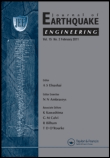
JOURNAL OF EARTHQUAKE ENGINEERING
Transforming knowledge into practical solutions for seismic challenges.JOURNAL OF EARTHQUAKE ENGINEERING, published by TAYLOR & FRANCIS LTD, stands as a pivotal resource in the fields of Building and Construction, Civil and Structural Engineering, and Geotechnical Engineering. With an impressive Q1 ranking in multiple categories for 2023, this journal is instrumental for researchers, professionals, and students committed to advancing knowledge in earthquake engineering and its practical applications. As a platform that spans the years from 1997 to 2024, it highlights significant contributions to safety, risk, reliability, and quality in engineering practices. While the journal operates on a subscription basis, its highly regarded articles, bolstered by robust Scopus rankings—such as rank #46 in Building and Construction—underscore its credibility and influence in shaping standards and methodologies within the discipline. Promoting innovative and evidence-based approaches, the JOURNAL OF EARTHQUAKE ENGINEERING is essential reading for anyone engaged in the science and technology of earthquake-resistant structures.
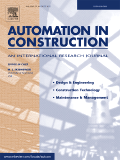
AUTOMATION IN CONSTRUCTION
Pioneering Innovations in Construction TechnologyAUTOMATION IN CONSTRUCTION is a premier academic journal published by Elsevier, dedicated to advancing the fields of Building and Construction, Civil and Structural Engineering, and Control and Systems Engineering. Since its inception in 1992, this journal has served as a vital platform for disseminating innovative research and practical applications in automation technologies within the construction industry. With a distinguished 2023 impact factor reflected in its Q1 ranking across multiple engineering categories—securing rank #3 in Civil and Structural Engineering and rank #3 in Building and Construction—AUTOMATION IN CONSTRUCTION stands out as a leading resource for researchers, professionals, and students keen on staying at the forefront of this rapidly evolving field. The journal offers access to cutting-edge studies that explore automation processes, methodologies, and tools, contributing to the enhancement of productivity and sustainability in construction practices. With contributions from global experts, each issue of AUTOMATION IN CONSTRUCTION provides comprehensive insights that help drive innovation and foster collaboration.
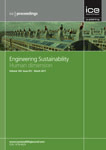
Proceedings of the Institution of Civil Engineers-Engineering Sustainability
Fostering Sustainable Practices in Civil EngineeringProceedings of the Institution of Civil Engineers - Engineering Sustainability is a distinguished journal published by Emerald Group Publishing Ltd, focusing on the intersection of civil engineering and sustainability practices. As a Q3 category journal in the field of Civil and Structural Engineering, it offers a critical platform for professionals, researchers, and students to share innovative research that addresses global environmental challenges from 2004 to its forthcoming issues in 2024. With an ISSN of 1478-4629 and E-ISSN of 1751-7680, this journal aims to disseminate vital knowledge regarding sustainable engineering solutions and practices, thereby fostering awareness and prompting action within the discipline. Although not an Open Access journal, it maintains a strong connection to academic and practitioner communities, ensuring high visibility and accessibility through its rigorous peer-review process. Its current Scopus rank places it in the 58th percentile, underscoring its relevance and contribution to the civil engineering domain.
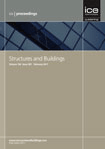
PROCEEDINGS OF THE INSTITUTION OF CIVIL ENGINEERS-STRUCTURES AND BUILDINGS
Transforming Ideas into Engineering ExcellencePROCEEDINGS OF THE INSTITUTION OF CIVIL ENGINEERS-STRUCTURES AND BUILDINGS, published by Emerald Group Publishing Ltd, is a leading journal in the fields of Building and Construction and Civil and Structural Engineering. Since its inception in 1992, this journal has served as a vital platform for disseminating high-quality research and innovative practices within the industry, contributing to the advancement of engineering knowledge and its applications. With an impact factor reflective of its significant presence in the field, this publication ranks in the Q3 category, reinforcing its role as an essential resource for researchers and professionals alike, positioning it among the top journals in its category. As of 2023, it holds notable Scopus rankings, emphasizing its credibility and influence within both Building and Construction (Rank #88/223) and Civil and Structural Engineering (Rank #171/379). Researchers aiming to enhance their understanding of cutting-edge developments in civil engineering will find this journal indispensable in accessing a wealth of knowledge, methodologies, and case studies that shape the infrastructures of tomorrow.
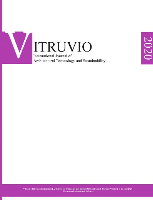
VITRUVIO-International Journal of Architectural Technology and Sustainability
Connecting researchers and practitioners for a greener future.Welcome to the VITRUVIO-International Journal of Architectural Technology and Sustainability, a leading open-access journal published by UNIV POLITECNICA VALENCIA, EDITORIAL UPV since 2015 and based in Spain. With its ISSN 2444-9091, this journal is dedicated to advancing the field of architectural technology and sustainability, providing a vital platform for researchers, professionals, and students alike. The journal has made significant strides in the academic landscape, achieving a Q3 ranking in Architecture and a Q4 ranking in Building and Construction for 2023. It features a diverse range of scholarly articles that explore innovative practices, cutting-edge research, and sustainable solutions in architecture. With a Scopus ranking placing it at #70/189 in Architecture and #161/223 in Building and Construction, it is positioned within the 63rd percentile and 28th percentile respectively, demonstrating its increasing impact in these vital fields. We invite you to engage with our content and contribute to the ongoing discourse around sustainability in architectural practice.

Magazine of Civil Engineering
Empowering Engineers with Open Access ResearchMagazine of Civil Engineering, published by ST-PETERSBURG STATE POLYTECHNICAL UNIVERSITY, is a prominent open access journal dedicated to the field of civil and structural engineering. With an ISSN of 2712-8172 and E-ISSN 2071-0305, it serves as a vital platform for disseminating high-quality research, innovative methodologies, and current trends in building and construction. Since its inception in 2010, the journal has embraced open access, ensuring broad visibility and accessibility for its contributions to the academic community. The magazine holds a respectable position in the academic hierarchy, ranked in the Q3 quartile for both Building and Construction and Civil and Structural Engineering categories as of 2023. It is indexed in Scopus, amplifying its societal impact and reach with a rank of #114/223 in Building and Construction and #224/379 in Civil and Structural Engineering. Researchers, professionals, and students alike are encouraged to engage with the cutting-edge studies presented in the magazine, contributing to the advancement of knowledge and practice within the civil engineering domain.
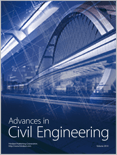
Advances in Civil Engineering
Unlocking the Future of Structural InnovationAdvances in Civil Engineering is a leading peer-reviewed journal published by HINDAWI LTD, dedicated to advancing knowledge and innovation in the field of civil and structural engineering. Holding an esteemed Q2 ranking in the 2023 category for Civil and Structural Engineering, this journal serves as a vital platform for disseminating cutting-edge research and practical applications that address contemporary challenges in infrastructure development, sustainable design, and material science. Launched in 2008 and operating as an Open Access journal since 2009, it promotes the free exchange of ideas by ensuring that all articles are accessible to researchers, professionals, and students globally. The journal is also indexed in Scopus, ranking at #142 out of 379 in its category, situating it within the 62nd percentile of its peers. With a focus on interdisciplinary collaboration and innovative solutions, Advances in Civil Engineering contributes significantly to the ongoing evolution of engineering practices and education, making it an essential resource for anyone involved in or studying the ever-evolving field of civil engineering.

Journal of Information Technology in Construction
Exploring the Intersection of Technology and ConstructionThe Journal of Information Technology in Construction is a premier open-access journal dedicated to advancing knowledge in the intersection of information technology and construction practices. Established in 1996, this journal has emerged as a vital resource for researchers, professionals, and students in the fields of Building and Construction, Civil and Structural Engineering, and Computer Science Applications. Published by the INT COUNCIL RESEARCH & INNOVATION BUILDING & CONSTRUCTION, this journal's rigorous peer-reviewed content is designed to foster innovation and enhance the application of technological solutions within the construction sector. With a commendable reputation, the journal has secured Q1 ranking in Building and Construction and features in the top quartiles in related disciplines, ensuring its impact and relevance within academic and industrial communities. Conveniently accessible, the journal showcases high-quality research that influences both theoretical and practical aspects of construction technology, thereby contributing significantly to the field. Based in Sweden, the Journal of Information Technology in Construction stands as a crucial platform for disseminating insights that drive progress in this dynamic and evolving domain.
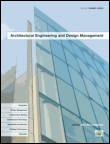
Architectural Engineering and Design Management
Advancing sustainable design and innovation in architecture.Architectural Engineering and Design Management, published by Taylor & Francis Ltd, is a leading journal dedicated to the interdisciplinary fields of architectural engineering and design management. Since its inception in 2005, the journal has established itself as an essential resource for researchers and practitioners, showcasing the latest developments and innovative practices within the architecture and construction industries. With a commendable impact factor reflected in its Q1 ranking in Architecture and high standings across building and construction, it addresses critical themes such as sustainable design, integrated construction processes, and management strategies that drive efficiency and creativity in evolving architectural contexts. Researchers will find the journal's commitment to disseminating high-quality research—evidenced by its impressive Scopus rankings, including a #13 ranking in Architecture—particularly valuable as it fosters a deeper understanding and advancement in the profession. The journal is accessible in print and online, ensuring that academic and professional communities stay at the forefront of architectural engineering innovation.